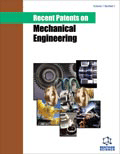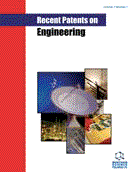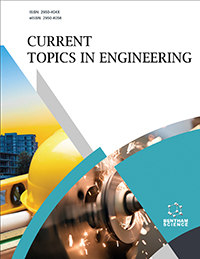Abstract
Background: Shock absorbers are the main damping component of vehicle suspension system, whose excellent passive characteristics can greatly improve and guarantee the ride comfort and handling stability of vehicles. Therefore, it is of great significance to research and develop a shock absorber with excellent passive characteristics.
Objective: The purpose of this paper is to propose and design a bionic three-link tube shock absorber with good buffering and vibration reduction performance and bionic adaptive characteristics. In addition, the passive characteristics of the purposed shock absorber are studied.
Methods: The bionics idea is applied to the development of vehicle shock absorbers. A three-link mechanism with dampers and springs is abstracted and designed according to the structure and the function of kangaroo legs. A bionic three-link tube shock absorber is constructed based on the traditional tube shock absorber structures and the three-link mechanism. Three-dimensional modeling and three-dimensional dynamic simulation of the shock absorber are carried out by CATIA and ADAMS.
Results: The body acceleration are greatly reduced relative to excitations; the dynamic displacement decreases sharply under greater excitation, but there is slight increase under smaller excitation; the motion function and joint change characteristics of the proposed shock absorber are similar to those of kangaroo legs to a certain degree.
Conclusion: The results show that the structure design of the bionic three-link tube shock absorber is reasonable and workable, the shock absorber presents good buffering and damping performance and some bionic adaptive characteristics, however, there is still room for further optimization of the structure design.
Keywords: Adaptive characteristic, bionic design, dynamic simulation, kangaroo leg, shock absorber, tube.
Recent Patents on Mechanical Engineering
Title:Design and Dynamic Simulation Research of a Bionic Three-Link Tube Shock Absorber
Volume: 14 Issue: 4
Author(s): Yong Song, Yue Li*, Zhanlong Li, Jinyi Lian, Qinglu Shi and Jie Meng
Affiliation:
- School of Mechanical Engineering, Taiyuan University of Science and Technology, Taiyuan 030024,China
Keywords: Adaptive characteristic, bionic design, dynamic simulation, kangaroo leg, shock absorber, tube.
Abstract:
Background: Shock absorbers are the main damping component of vehicle suspension system, whose excellent passive characteristics can greatly improve and guarantee the ride comfort and handling stability of vehicles. Therefore, it is of great significance to research and develop a shock absorber with excellent passive characteristics.
Objective: The purpose of this paper is to propose and design a bionic three-link tube shock absorber with good buffering and vibration reduction performance and bionic adaptive characteristics. In addition, the passive characteristics of the purposed shock absorber are studied.
Methods: The bionics idea is applied to the development of vehicle shock absorbers. A three-link mechanism with dampers and springs is abstracted and designed according to the structure and the function of kangaroo legs. A bionic three-link tube shock absorber is constructed based on the traditional tube shock absorber structures and the three-link mechanism. Three-dimensional modeling and three-dimensional dynamic simulation of the shock absorber are carried out by CATIA and ADAMS.
Results: The body acceleration are greatly reduced relative to excitations; the dynamic displacement decreases sharply under greater excitation, but there is slight increase under smaller excitation; the motion function and joint change characteristics of the proposed shock absorber are similar to those of kangaroo legs to a certain degree.
Conclusion: The results show that the structure design of the bionic three-link tube shock absorber is reasonable and workable, the shock absorber presents good buffering and damping performance and some bionic adaptive characteristics, however, there is still room for further optimization of the structure design.
Export Options
About this article
Cite this article as:
Song Yong , Li Yue *, Li Zhanlong , Lian Jinyi , Shi Qinglu and Meng Jie , Design and Dynamic Simulation Research of a Bionic Three-Link Tube Shock Absorber, Recent Patents on Mechanical Engineering 2021; 14 (4) . https://dx.doi.org/10.2174/2212797613999201228202944
| DOI https://dx.doi.org/10.2174/2212797613999201228202944 |
Print ISSN 2212-7976 |
| Publisher Name Bentham Science Publisher |
Online ISSN 1874-477X |
 11
11
- Author Guidelines
- Bentham Author Support Services (BASS)
- Graphical Abstracts
- Fabricating and Stating False Information
- Research Misconduct
- Post Publication Discussions and Corrections
- Publishing Ethics and Rectitude
- Increase Visibility of Your Article
- Archiving Policies
- Peer Review Workflow
- Order Your Article Before Print
- Promote Your Article
- Manuscript Transfer Facility
- Editorial Policies
- Allegations from Whistleblowers
- Announcements
Related Articles
-
Neutrophil to Lymphocyte (N/L) and Platelet to Lymphocyte (P/L) Ratios in Differentiating Acute Heart Failure from Respiratory Infection
Current Vascular Pharmacology Agonism of Histaminergic-H<sub>1</sub> Receptors in Ischemic Postconditioning During Cerebral Ischemia-Reperfusion Injury is Protective
Current Neurovascular Research The Emerging Role of Complement C3 as A Biomarker of Insulin Resistance and Cardiometabolic Diseases: Preclinical and Clinical Evidence
Reviews on Recent Clinical Trials Edaravone May Prevent Ferroptosis in ALS
Current Drug Targets Arterial Hyperoxia in Severe Head Injury: A Useful or Harmful Option?
Current Pharmaceutical Design Small Molecules Activating TrkB Receptor for Treating a Variety of CNS Disorders
CNS & Neurological Disorders - Drug Targets Interactions between Inflammation and Coagulation in Autoimmune and Immune-Mediated Skin Diseases
Current Vascular Pharmacology Lower Frequency of co-Morbid Medical Disorders Related to Poor Impulse Control in Parkinson’s than Alzheimer’s Disease
Current Aging Science Neurorestorative Effect of Urinary Bladder Matrix-Mediated Neural Stem Cell Transplantation Following Traumatic Brain Injury in Rats
CNS & Neurological Disorders - Drug Targets Quantitative Gait Disturbances in Older Adults with Cognitive Impairments
Current Pharmaceutical Design SGLT-2i and Cardiovascular Prognosis
Current Pharmaceutical Design Artificial Hibernation by Phenothiazines: A Potential Neuroprotective Therapy Against Cerebral Inflammation in Stroke
Current Neurovascular Research Circular RNAs and Glioma: Small Molecule with Big Actions
Current Molecular Medicine VEGF, a Mediator of the Effect of Experience on Hippocampal Neurogenesis
Current Alzheimer Research Involvement of microRNA-146a in the Inflammatory Response of S tatus Epilepticus Rats
CNS & Neurological Disorders - Drug Targets The Impact of Variable Factors on the Health-Related Quality of Life in the Elderly in Japan and Russia
Current Aging Science Combining Growth Factor and Stem Cell Therapy for Stroke Rehabilitation, A Review
Current Drug Targets Biochemical Strategies to Anticoagulation: A Comparative Overview
Current Vascular Pharmacology Mass Spectrometry Techniques: Principles and Practices for Quantitative Proteomics
Current Protein & Peptide Science Advanced Micro-Nano-Bio Systems for Future Targeted Therapies
Current Nanoscience























